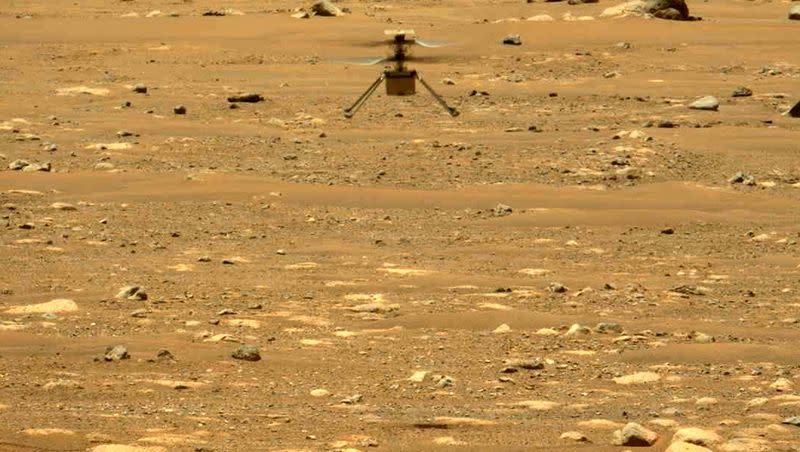NASA’s tiny, mighty Mars helicopter Ingenuity just made its last flight

It was no small feat nearly three years ago when NASA’s lunchbox-sized Ingenuity helicopter took its maiden flight on Mars, marking the first time an aircraft flew on another planet and, in this case, one that is around 140 million miles away with just 1% of the atmosphere of Earth.
And the U.S. space agency had modest goals for the helicopter, which traveled to the red planet back in 2021, strapped to the belly of the Mars Perseverance Rover, which was (and is) the star of the mission. NASA hoped Ingenuity could make five flights over a month’s time to demonstrate the ability to fly an aircraft on a distant planet that barely has “air.” But Ingenuity had already far exceeded the goals of its Jet Propulsion Lab creators before suffering damage to one of its rotors on a Jan. 18 flight that permanently grounded the craft.
Ingenuity operated from the Martian surface for almost three years, performed 72 flights, and flew more than 14 times farther than planned while logging more than two hours of total flight time, according to NASA.
“The historic journey of Ingenuity, the first aircraft on another planet, has come to end,” NASA Administrator Bill Nelson said in a press statement. “That remarkable helicopter flew higher and farther than we ever imagined and helped NASA do what we do best — make the impossible, possible. Through missions like Ingenuity, NASA is paving the way for future flight in our solar system and smarter, safer human exploration to Mars and beyond.”
Related
Spacesuits, SpaceX, safety worries push NASA to delay moon missions
This Utah author’s work was headed to the moon. Now it’s on a deeper journey
NASA’s plan to return astronauts to the moon falling behind schedule according to new audit
After proving out the ability to fly a 4-pound aircraft powered by a pair of 4-foot long, counter-rotating rotors that have to spin extra fast, around 2,800 rpm, to create enough lift, Ingenuity moved on to perform some bonus duties for NASA.
Since completing a series of test flights in the spring of 2021, Ingenuity has been working as a sort of reconnaissance “scout” for the Perseverance Rover, making short flights to observe and record potential rover routes and capturing some stunning aerial images of Mars along the way.
Over an extended mission that lasted for almost 1,000 Martian days, more than 33 times longer than originally planned, NASA said Ingenuity was upgraded with the ability to autonomously choose landing sites in treacherous terrain, dealt with a dead sensor, cleaned itself after dust storms, operated from 48 different airfields, performed three emergency landings and survived a frigid Martian winter.
The Ingenuity experiment was so successful that NASA has already made plans to include helicopters in upcoming missions.
“It’s humbling Ingenuity not only carries onboard a swatch from the original Wright Flyer, but also this helicopter followed in its footsteps and proved flight is possible on another world,” Ingenuity project manager, Teddy Tzanetos, of NASA JPL, said in a press statement. “The Mars helicopter would have never flown once, much less 72 times, if it were not for the passion and dedication of the Ingenuity and Perseverance teams. History’s first Mars helicopter will leave behind an indelible mark on the future of space exploration and will inspire fleets of aircraft on Mars — and other worlds — for decades to come.”

